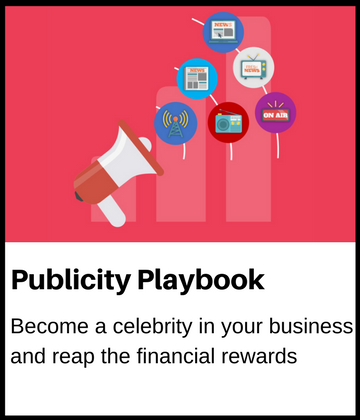A press release is simply an announcement about your company. For example, your release may announce the launch of your company. Or it may announce the launch of a new product or service. Or, it could announce a new hire, partnership or investor. Or the press release could mention new information you have discovered, for example, that customer preferences have changed.
Whatever, the case, if there’s news to share about your company, you should document it in a press release. In creating your press release, the rule of thumb is to answer the key questions reporters will have, mainly: Who, What, When, Where, and Why (or How).
Now, creating a press release by itself has little value. Rather, it’s the distribution of your press release that generates big value. For example, if you can get your press release in front of the editor of a major newspaper, the editor may assign a journalist to write a story based on your release. And then your release and story could be seen by thousands if not millions of people.
Importantly, press release distribution has changed dramatically over the past 10-20 years due to, you guessed it — the internet, which has changed how news and other information is dispersed.
Today, there are press release sites and services that will distribute your release to thousands of reporters. Below are answers to some key questions about press releases and press release distribution services.
Are press releases dead?
Press releases are certainly not dead. However, because it has become so easy to create a press release and distribute it, if your release is boring, it may not be worth issuing. That is, your press release is competing for the attention of journalists against lots of other releases. So make sure yours (and particularly your press release title) stands out so editors and journalists feel compelled to read it.
If my release doesn’t get picked up by a journalist, was it a waste?
The goal of your press release is to get it picked up by a journalist. So they do a story about or mentioning you or your company.
But, there is a secondary goal. Virtually all of the press release distribution services also post your releases on their website. And because several of these websites are looked upon favorably by Google and other search engines, oftentimes prospective customers will find your press releases on their sites when they search relevant terms.
So, even if your press release doesn’t get you picked up by journalists, it still might be read directly by prospective customers who can then find you (based on the contact information you include as part of the release).
What are the main press release distribution services?
There are three core types of press release distribution services, that vary mostly based on their cost as follows:
Free services:
There are several free press release distribution services including:
PR.com
I-Newswire.com
PRlog.org
The benefit of these sites is that they are free, and that they post your release on their sites. The negative is that they don’t get read nearly as much by actual journalists than the paid services.
Value-Based Paid Services:
The press release distribution service I use most is PRWeb.com.
PRWeb is relatively inexpensive ($89 per release), posts your press release on their site (where real people do come and read it) and gets good exposure from actual journalists.
Also, many times the press releases you submit on PRWeb get automatically syndicated (meaning posted along with links to your website) on other sites like Yahoo News and the websites of major newspapers. This syndication gets your release read by many more reporters and/or prospective customers.
And, if you want to submit multiple press releases, PRWeb offers big discounts when you purchase multi-release plans.
Premium Paid Services:
The two premium paid press release distribution services are Cision and BusinessWire.
The benefit of these services is that you get the best possible exposure to news editors and journalists, exposure on their websites, and syndication on other websites.
The negative is the cost, which is often several hundred dollars per release. I use these sites sparingly, and only when I have a press release that I’m confident warrants great media attention.
Press releases are a great, no or low-cost way to get news about your company out to both the media and customers. And they take very little time to create. So, add this strategy to your marketing mix today.
How to Get Massive Publicity For Your Business
Do you want to position your company as the leading authority in your industry?
Do you want to easily gain new customers, investors, or partners?
If so, you need publicity.
And I’ve created a step-by-step course — Publicity Playbook — that shows you how to do it right.



